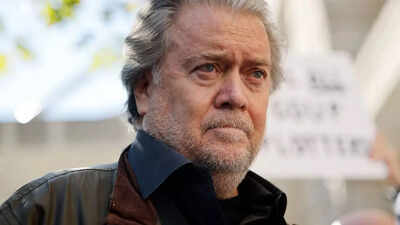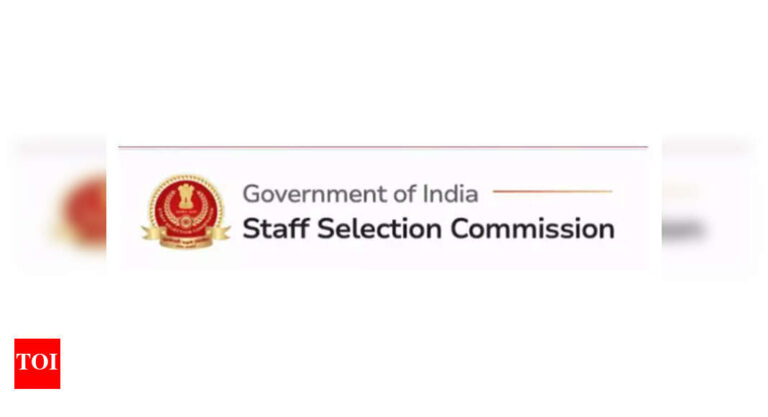
When Steve Bannon recently proclaimed that “no foreign students should be in the country right now” and called for an end to H‑1B visas, it sparked global headlines and fresh anxiety across Indian student and tech communities. But behind the controversy lies a career shaped by elite education, military discipline, high finance, and a polarising chapter in American politics.So who is Steve Bannon, really?
From Norfolk to the Navy
Born in 1953 in a working-class Irish-Catholic family in Norfolk, Virginia, Stephen Kevin Bannon’s early years were unremarkable—but he stood out for his discipline and drive. He earned his B.A. in urban planning from Virginia Tech in 1976, where he was active in student government and edited the school newspaper.Rather than head directly to business or law school like many of his peers, Bannon joined the United States Navy, serving as a surface warfare officer aboard a destroyer and later as a Pentagon aide. Even while in uniform, Bannon was studying—earning a master’s in national security studies from Georgetown University at night.
Harvard Business School and the big break
After leaving the Navy in the early ’80s, Bannon set his sights on Wall Street. He enrolled at Harvard Business School, graduating with an MBA in 1985. He later described the experience as transformative, saying Harvard “taught him how the world really works.”His next move was into the high-stakes world of investment banking. He joined Goldman Sachs, where he worked on mergers and acquisitions, particularly in the media sector. Bannon rose quickly, eventually co-founding his own boutique firm, Bannon & Co. One of his smartest deals? Negotiating a small equity stake in Seinfeld’s syndication profits—a stream of income that would serve him well in the decades to come.
Hollywood, documentaries, and a shift to ideology
In the 1990s, Bannon moved to Los Angeles, pivoting into the world of media production. He produced several low-profile films and documentaries, but it wasn’t until the early 2000s that his ideology began to clearly shape his work.He directed In the Face of Evil, a Reagan-era documentary that would later catch the attention of conservative circles. That project marked the beginning of Bannon’s ideological transformation—from financier to nationalist firebrand.
Breitbart and the rise of the alt-right
In 2007, Bannon became involved with Breitbart News, a right-wing website founded by Andrew Breitbart. After Breitbart’s death in 2012, Bannon took over and refashioned the site into what he famously called “the platform for the alt-right.”Under Bannon, Breitbart trafficked in controversial and hyper-partisan content, gaining popularity among conservatives disillusioned with mainstream politics. He positioned himself as a cultural warrior, often blending economic populism with harsh rhetoric on immigration, Islam, and globalism.
Trump’s campaign and a brief White House stint
Bannon’s influence peaked when he joined Donald Trump’s 2016 presidential campaign as its CEO during its most critical stretch. He helped sharpen Trump’s messaging around nationalism, trade protectionism, and immigration, becoming an architect of what he called “economic nationalism.”Following Trump’s victory, Bannon was named White House Chief Strategist, a role he held from January to August 2017. His tenure was marked by clashes with other top officials and a controversial presence in policymaking. He was reportedly behind some of the administration’s early hardline immigration and travel ban policies.But Bannon’s time in the White House was short-lived. After months of infighting and negative press, he was pushed out. Trump later distanced himself from Bannon, calling him “Sloppy Steve” after a very public fallout.
Global nationalism and more controversy
Since leaving the White House, Bannon has tried to shape nationalist movements in Europe and has remained a provocateur in American media and politics. He was indicted in 2020 on fraud charges related to a fundraising campaign for Trump’s border wall—charges that were later dropped after a presidential pardon.As of 2025, Bannon is back in the spotlight for his hardline views on education and immigration, calling for:
- A ban on H‑1B visas
- Immediate departure of foreign graduates after finishing U.S. degrees
- The dismantling of post-study work programs like OPT
These statements have drawn strong reactions from tech leaders, universities, and immigration advocates, with critics calling them economically self-defeating and socially divisive.
Bannon’s lasting influence
Bannon is no policymaker today, but he remains an influential voice in far-right circles, particularly those shaping conservative views on immigration, education, and globalisation.For students and aspiring professionals, his words are a reminder that U.S. immigration policy can shift with the winds of political ideology, even if not immediately. Understanding the thinkers behind these positions, including their backgrounds, helps decode the bigger picture.Steve Bannon is a man of contradictions: a Harvard graduate who now rails against elite institutions, a former investment banker who became a voice of economic populism, and a media producer who once helped elect a president, only to be cast aside by him months later.Whether you agree with him or not, Bannon’s journey from classrooms and boardrooms to political war rooms reveals the winding paths that education, ideology, and ambition can take, especially in America’s volatile public sphere.TOI Education is on WhatsApp now. Follow us here.








